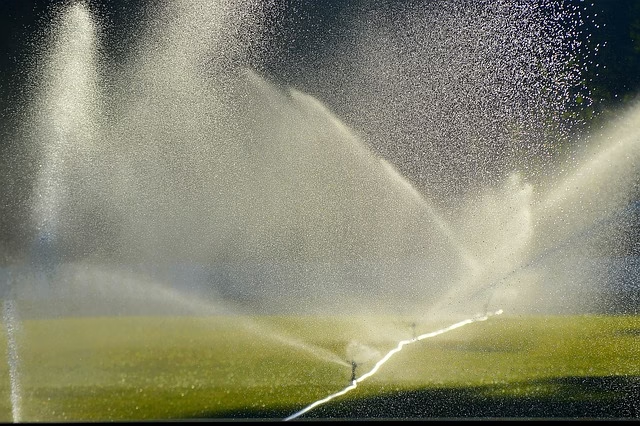
When it comes to installing and using irrigation systems, choosing the right components can make all the difference between a thriving landscape and a costly maintenance headache.
In sprinkler irrigation systems, where multiple components are required for efficient operation, choosing the right piping system is one of the most critical decisions. Flexible sprinkler pipes have emerged as a game-changing solution for both residential and commercial applications.
Whether you’re a home gardener or a landscaping professional, flexible sprinkler pipes offer a cost-effective solution for challenging layouts, helping you make informed decisions that last.
What Is a Flexible Sprinkler Pipe?
As the name suggests, the pipe is flexible and can be bent into various shapes to avoid obstacles and ensure optimal irrigation.
Unlike traditional sprinkler systems that use rigid PVC, flexible sprinkler pipes are made from HDPE or other durable polymers, offering both flexibility and structural strength under pressure.
These flexible pipes are commonly available from ½ inch to 2 inches diameters. And from 18 inches to 1000 feet in length.
These pipes are made from different materials and available in different lengths, resistant to different pressures, and suitable for both low and high-pressure sprinkler irrigation.
Key Benefits of Flexible Sprinkler Pipe
Enhance Durability and Longevity
Flexible pipes are helpful and withstand challenging conditions typical of underground irrigation systems. The material composition provides excellent resistance to root intrusion, chemical corrosion, and UV degradation.
Unlike metal pipes that can corrode over time or rigid plastic pipes that may crack under stress, a flexible sprinkler pipe maintains its integrity even when subjected to ground movement, temperature fluctuations, and external pressures.
The pipe’s ability to flex rather than break under stress makes it particularly valuable in areas prone to soil shifting, freeze-thaw cycles, or seismic activity.
Superior Installation Efficiency
When in difficult terrain and curves, it is difficult to cut and joint pipes like PVC, which gets wasted and requires a specialist.
With a flexible sprinkler pipe, installers can simply unroll the pipe and guide it along the desired path, significantly reducing the complexity of the installation process.
The flexibility eliminates the need for numerous elbow joints, tees, and couplers that are required with rigid systems. This not only reduces material costs but also minimizes potential failure points in the system. Each joint or fitting represents a potential leak source, so reducing their number inherently improves system reliability.
Cost Effective
As you already know, it requires more parts if you do not use flexible pipes.
The reduced labor requirements for installation, combined with lower material costs due to fewer fittings needed, can result in substantial savings compared to traditional rigid pipe systems.
Additionally, the durability and reduced maintenance requirements of flexible sprinkler pipes contribute to a lower total cost of ownership over the system’s lifetime.
Versatile Use Cases
Versatility use case and adaptiveness of flexible pipe residential lawn systems to large-scale agricultural operations.
Its versatility makes it suitable for:
- Residential lawn irrigation systems
- Commercial landscape irrigation
- Agricultural crop irrigation
- Sports field watering systems
- Golf course irrigation networks
- Municipal park and recreation area watering
- Greenhouse and nursery irrigation systems
Can Flexible Pipes Be Used In Sprinkler Systems?
The short answer to this question is Yes… Flexible pipe is usable in the Sprinkler system, as you know how it benefits the sprinkler system.
The one thing to keep in mind is to use the right type of flexible pipe. You cannot use the low-cost plastic flexible pipe for a high-pressure sprinkler system, or you don’t need a soft and small flexible pipe.
Personally, I use a PVC flexible pipe to extend the sprinkler to irrigate the land that cannot be covered in the underground sprinkler system.
You can choose the right pipe for your needs, and good to go.
Maintenance and Troubleshooting
Routine Maintenance Requirement
Compared to rigid pipe maintenance, flexible pipe requires minimum maintenance, but regular inspections and preventive care help ensure optimal performance and longevity.
Monitor system pressure regularly to identify potential issues before they become major problems. Sudden pressure drops may indicate leaks, while pressure increases could suggest blockages or valve malfunctions.
Pipe Damage From External Force
Damage from digging, landscaping activities, or equipment can puncture or crush flexible sprinkler pipes.
Repair techniques include using coupling fittings for small punctures or replacing damaged sections for more extensive damage.
Fitting Failure
Connection points represent the most common failure locations in flexible sprinkler pipe systems. Using quality fittings and proper installation techniques minimizes these issues, but periodic inspection and replacement of aging fittings may be necessary.
Root Intrusion
While a flexible sprinkler pipe offers good root resistance, aggressive root systems can occasionally cause problems. Regular inspection and prompt removal of encroaching roots help prevent system damage.
Pipe Damaged from External Sources
Flexible pipes can be damaged from digging and landscaping activities, or equipment can puncture or crush flexible sprinkler pipes. Repair techniques include.
Seasonal Consideration
In climates subject to freezing temperatures, proper winterization of flexible sprinkler pipe systems is essential.
Spring system startup should include a thorough inspection of all components, pressure testing, and gradual system activation to identify any winter damage before full operation begins.
Last Thought…
Using the flexible pipe in the sprinkler system has become a new necessity. The combination of flexible pipes increases installation efficiency, durability, cost-effectiveness, and performance, making a flexible sprinkler pipe an excellent choice for residential, commercial, and agricultural irrigation needs.
Success with flexible sprinkler pipe systems depends on proper product selection, quality installation practices, and appropriate maintenance procedures.
Using the flexible pipe in irrigation, where water conservation becomes increasingly important and smart technology integration expands, the flexible sprinkler pipe provides the foundation for efficient, adaptable irrigation systems that can grow and evolve with changing needs.

Leave a Reply